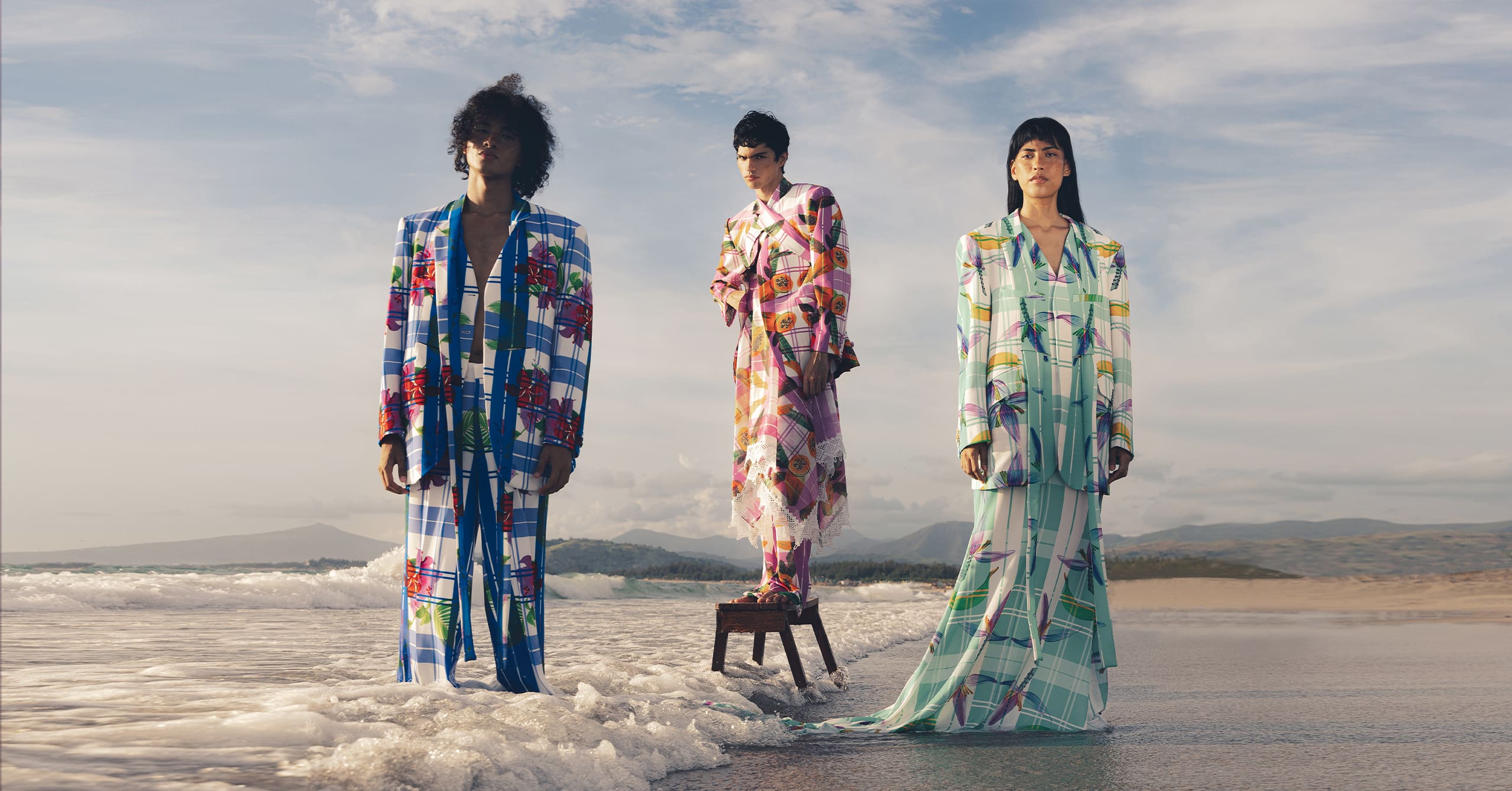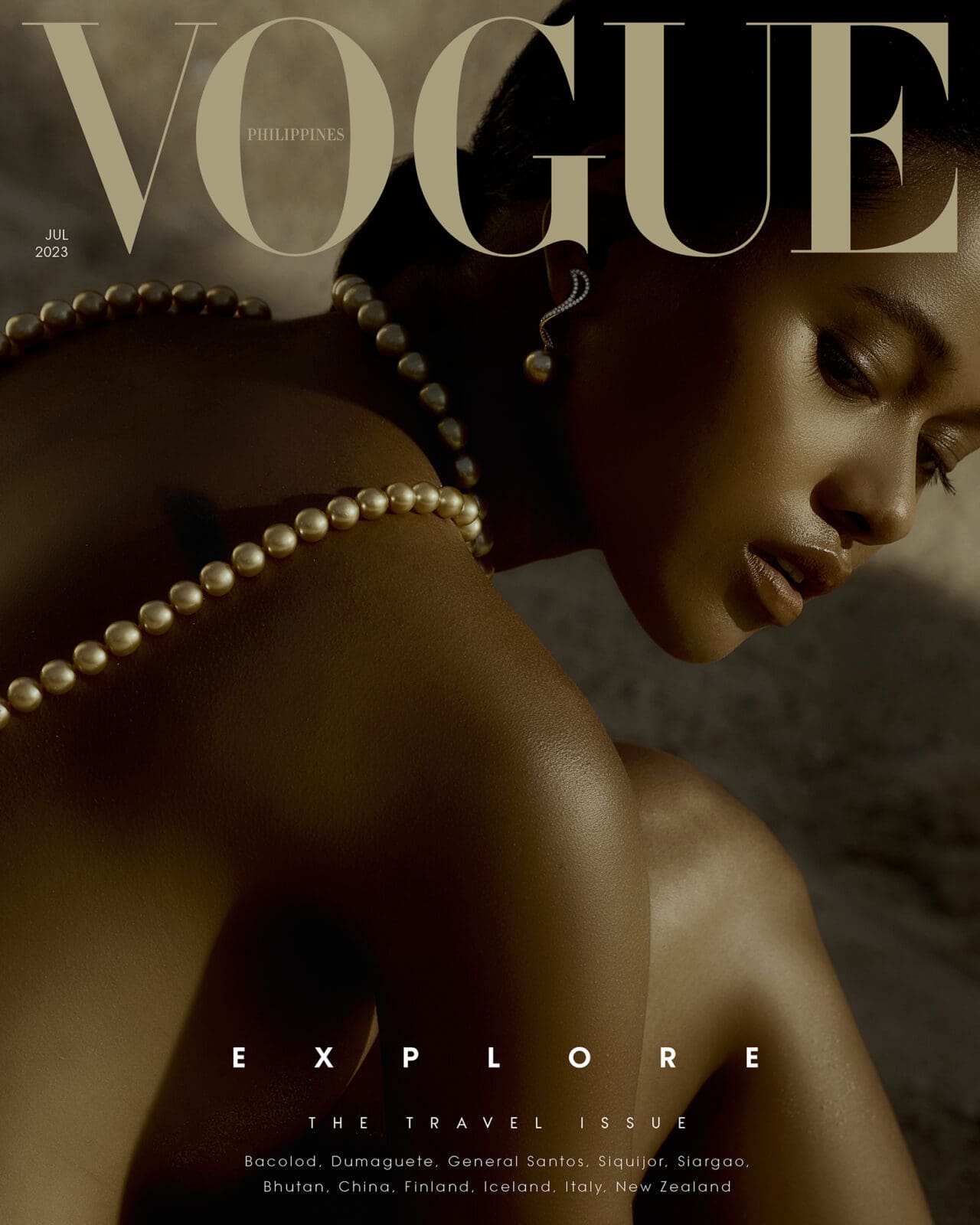Photo courtesy of Jaggy Glarino
Photo courtesy of Jaggy Glarino
The designer’s latest collection is inspired by his SOCCSKSARGEN upbringing and delves into the Filipino notion of home.
“Apart from the hot weather, and the salty air, General Santos is home,” fashion designer Jaggy Glarino says, painting a picture of his birthplace. He grew up in the fishing city, which sits on the southern end of Mindanao. After being unable to return for some time during the pandemic, Glarino confesses, “That’s when the realization hit, that the feeling of home is really different.”
The designer reminisces the scenes that shaped his childhood: his father going to the palengke [wet market] at four o’clock in the morning to buy ingredients for their family’s karinderya [eatery], the kapitbahay [neighbor] is carrying big Thermos jugs while they partook of chismis [gossip] outside, or the congregation of tricycle drivers they would serve coffee to in the morning before they would go off to work. Coffee shops weren’t a thing then. “For drivers, we were their Starbucks,” he recalls, adding that their ground coffee was freshly roasted, and prepared on katsa [cheesecloth], the old fashioned way.
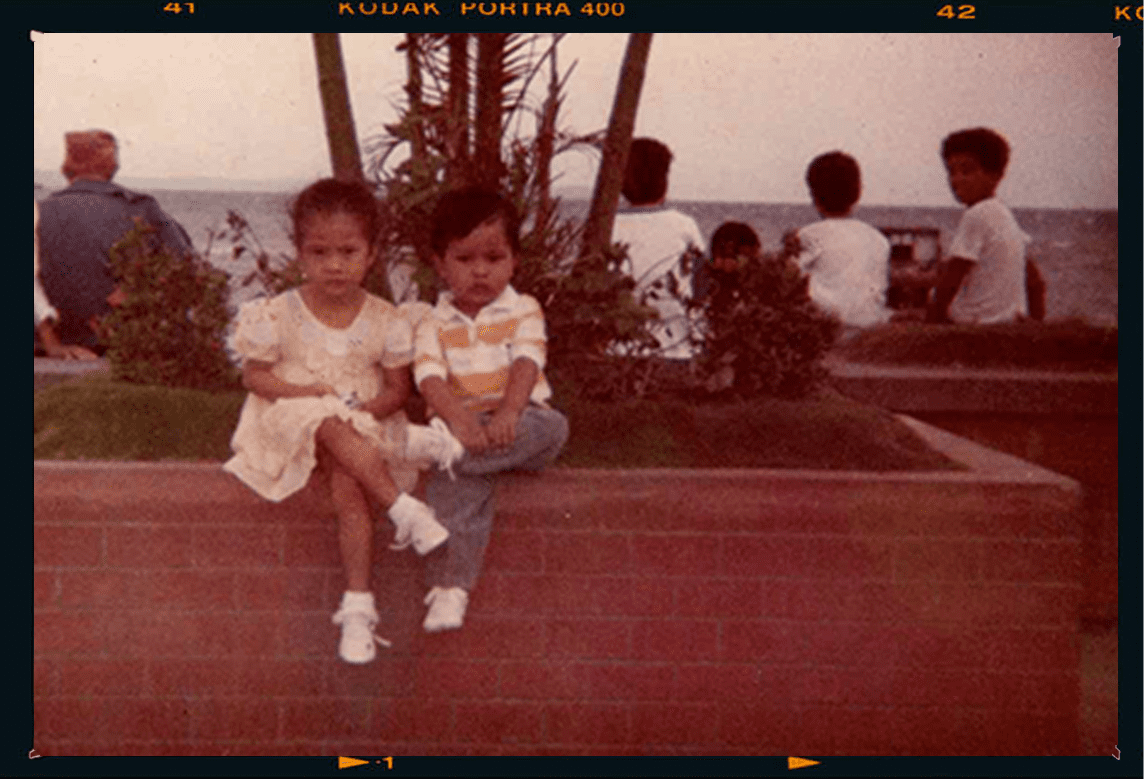
These visuals have given new life to Glarino’s recent work. His Spring-Summer 2023 collection at Bench Fashion Week was rife with nostalgic references to his early life in Gen San, from striped sando [sleeveless shirt] bags to printed plaid tablecloths, and solihya [thin strands of rattan] details, and more—all of which allude to a childhood spent around his family’s kitchen.
Yet, he tells Vogue Philippines that what he now calls a “gold mine of inspiration” did not come easy. As with many of us, stories of the past are often clouded in shame. “There was a time where we thought sharing too much about ourselves, our personal experience, it’s too bakya [low brow]. It’s not soft, ’di ba [right]?” Glarino explains. “I didn’t think it was that classy… It was not appealing. So there was also a conscious choice to repress that side of me.”
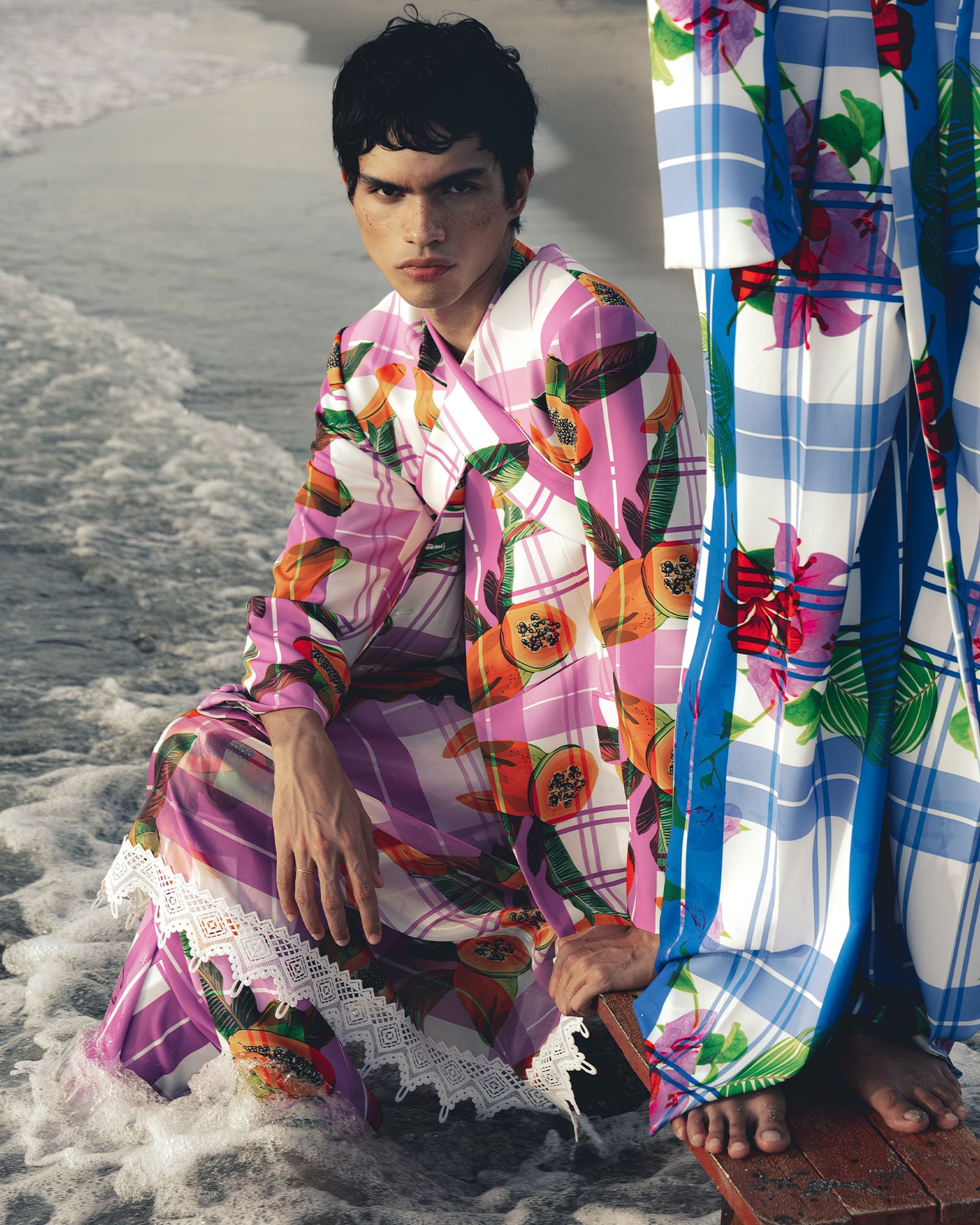
Growing up, despite graduating with a degree in nursing, arts and fashion had always been a strong presence in his life. “Everything that has to do with art, I was pretty much involved in when I was in elementary,” he describes, listing everything from fruit carving to poster-making competitions.
Eventually, this extended to pageantry, a prevalent feature in provincial life, Glarino says. “It’s not similar here in Manila. Pageantry in the provinces is a huge thing,” he continues. Though fashion design as a profession was never really on his radar, Glarino remembers coming home between college classes to watch fashion on TV, borrowing copies of his friend’s fashion magazines, and sewing pageant costumes in between reviewing for the boards.
After making money doing the latter, everything snowballed from there. He gained experience making costumes and joining competitions, until someone found him a fashion job in Dubai, where he got his first real taste of the industry, in the middle of what he describes as a culture that takes fashion and clothing “very seriously.”
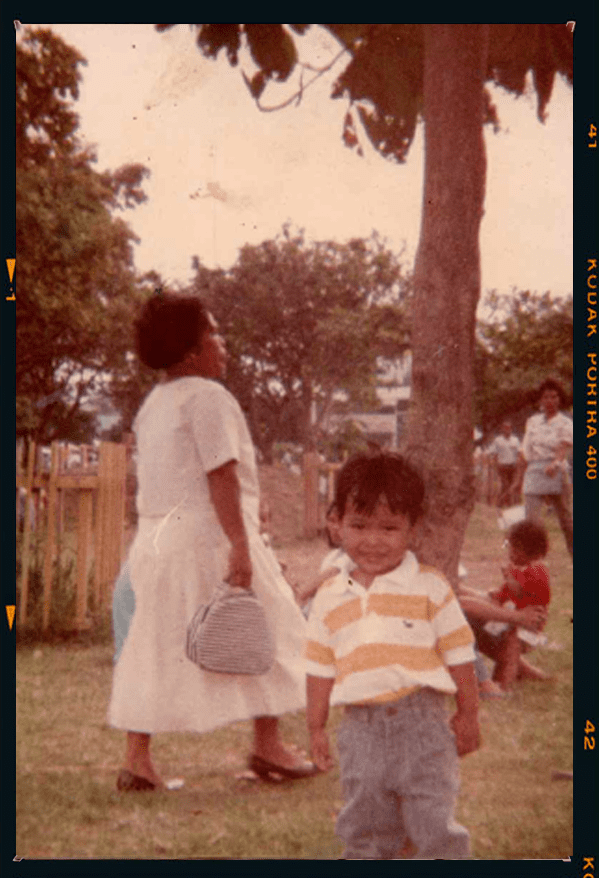

Upon returning home, Glarino enrolled in fashion school. Then joined a competition where he won second place. There, he met acclaimed designer Lulu Tan-Gan. She decided to sponsor his schooling at the world-renowned Central Saint Martins, which has produced the likes of Alexander McQueen, John Galliano, Phoebe Philo, and many other legendary figures in the fashion industry.
Several years later, despite solidifying his name in the local fashion circuit, and even managing to showcase a collection at Tokyo Fashion Week, Glarino found himself struggling to procure inspiration and define his identity as a designer.
“When I was starting my career in fashion, I was preoccupied by the idea that I have to look, to a certain degree, like an international designer. So when I started, it was more of a chore, more than a fashion language that I’m trying to speak,” he reflects. “After the pandemic, [I had] a realization that, oh, I should look more into my core as a person, and as a designer more than trying to please a particular audience.”
With confidence in his craft and a change in generational values, this introspection allowed him to explore another side of himself he never thought he’d share through his medium. “That’s the strength of this generation, I think. Authenticity is a huge thing, especially with the advent of social media.”
In taking a deep dive into his personal experiences, Glarino struck a cultural heartstring. “As much as my childhood experiences as a Pinoy kid were unique, I think it’s also very generic. I didn’t realize it until my collection recently came out,” he says.
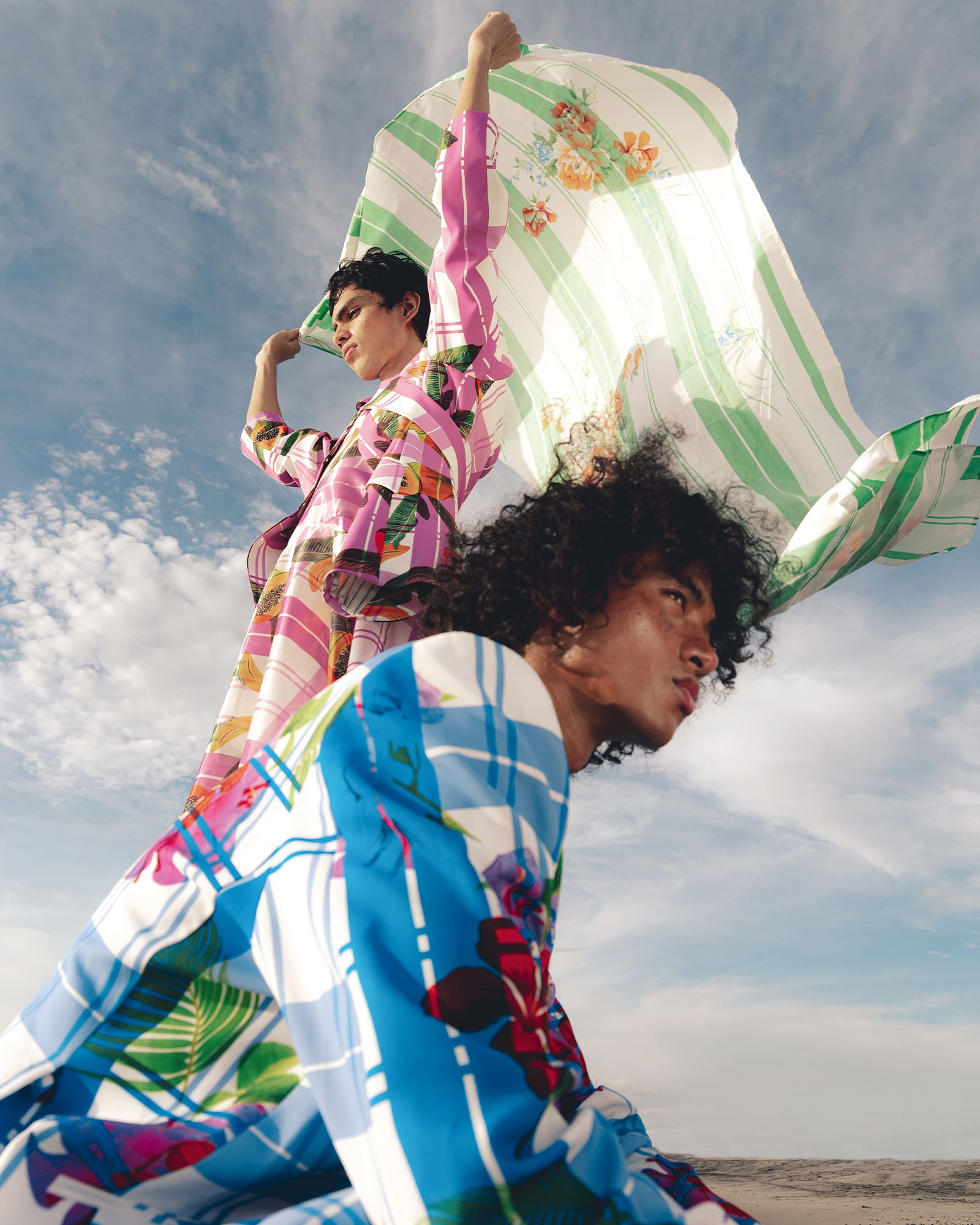
“I thought of myself as a gay kid dressing up in kumot [blankets] when my parents are out of the house, that it was a very unique experience,” the designer explains, detailing how a number of people reached out to him with similar stories after the debut of his latest collection. Though Glarino set out to tell his own story, he ended up uncovering a collective narrative of countless Filipinos around the world. It’s this touch-point that he plans to explore further. “It’s like a shared cultural experience amongst Pinoy children.”
This realization, or “revelation,” as he puts it, comes as just one of many full-circle moments in Glarino’s career. In branching out as a designer, Glarino has also since dressed the likes of former Miss Universe winners, Pia Wurtzbach and Catriona Gray. It’s poetic to think that Glarino’s ruminations of childhood in General Santos City, steeped in the fantasy of clothing and pageantry, have led him to where he is today.
